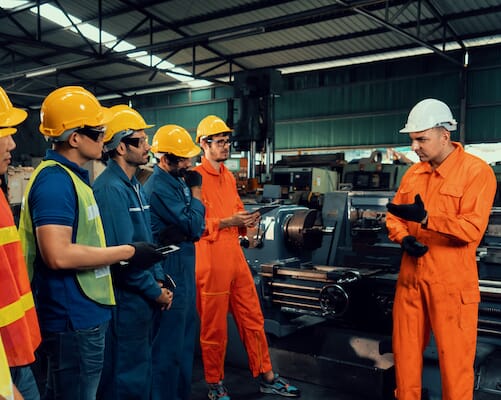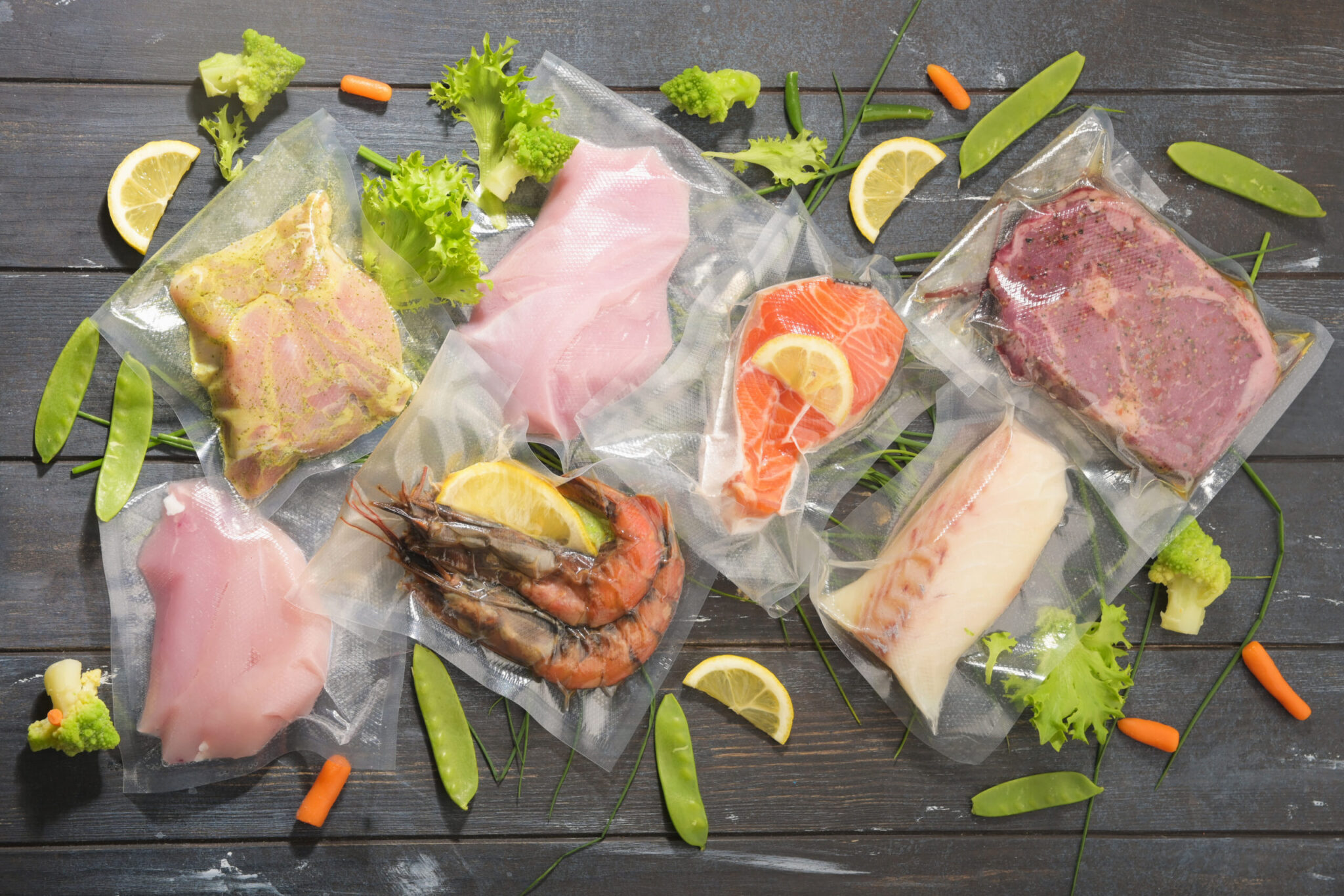
Repairing Vs. Replacing An Air Compressor
May 24, 2023
Air Compressor Safety: 8 Essential Tips
June 7, 2023Four Applications of Industrial Vacuum Pumps in Food and Beverage
Kaishan USA | May 31, 2023 | Uncategorized

Vacuum technology supports degassing, which removes gas bubbles from liquids, eliminating unwanted flavors and aromas that can develop during the fermentation or aging of wine and beer. This process enables brewers and vintners to maintain more consistent flavors and aromas.
From molds and sealing to packaging, bottling and drying, vacuum technology has played a significant role in the food and beverage industry for decades.
Food and beverage producers have come to rely on vacuum technology for several reasons:
-
-
- Spoilage. Removing air from a package prevents bacteria and other microorganisms from growing. As a result, food stays non-perishable longer, even without preservatives.
- Flavor. Food in a vacuum retains flavor and texture since it’s not exposed to air.
- Hygienic. As a result of its anti-microbial characteristics, vacuum technology is cleaner and more hygienic.
- Attractive. Vacuum technology enables the use of vacuum-sealed bags that allow food processors to showcase colorful products like fresh fruit and vegetables.
-
As a result, vacuum technology has spread to several critical applications in the food and beverage industry, including cooking, packaging, freeze-drying and degassing.

Following the sous vide (literally, “under vacuum”) concept, vacuum cooking allows the food to cook more evenly and retain more of its natural flavor and texture.
Cooking
In vacuum cooking, food is placed in a sealed bag, and the air is removed by vacuum technology. The bag is then placed in water or a steam oven at low temperatures, allowing the food to cook more evenly and retain its natural flavor and texture.
Packaging
Vacuum technology helps preserve meat products, fish, cheese and other perishable items, extending their shelf life significantly. In addition, the elimination of oxygen cuts the activity of bacteria and helps prevent spoilage.
Freeze-Drying
Freeze-drying relies on vacuums to remove all but a small percentage of the water from fruit, cooked meat, vegetables, herbs and spices. Even instant coffee. And while there are other ways to dry food, freeze-drying preserves aromas, keeping the structure of the food intact.

Freeze-drying of fruit, cooked meat, vegetables, herbs and spices preserves aromas and keeps the structure of the food intact.
Degassing
Degassing removes gas bubbles from liquids, eliminating unwanted flavors and aromas that can develop during fermentation or aging of wine and beer. It allows brewers and vintners to maintain more consistent flavors and aromas.
Rotary Screw Vacuum Pumps Replacing Vane Pumps
And while vane vacuum pumps have been used extensively in the industry, more and more producers are turning to rotary screw vacuum pumps to improve performance. The benefits include:
-
-
- Reliability. Rotary screw vacuum pumps are more reliable, last longer and are easier to maintain.
- Low energy consumption. Plants can reduce horsepower requirements by as much as 40% by switching from vane to rotary screw vacuum pumps. In addition, rotary screw vacuum pumps equipped with VSD drives and variable discharge ports optimize the energy required to perform at various vacuum levels, thereby increasing overall efficiency. Kaishan’s KRSV is the industry’s only vacuum pump equipped with a variable discharge port.
- Low maintenance. Rotary screw vacuum pumps are designed to reduce the total cost of ownership through reduced maintenance costs. They only require a simple spin-on oil filter change every 2,000 hours and oil change at an extended 8,000-hour interval, while vane pumps must be serviced every 750-1,500 hours.
- Low noise. Many rotary screw vacuum pumps are quiet enough to hold a conversation nearby.
- Automatic alerts. The pumps automatically alert you when performance falls below a specified threshold. Sophisticated microprocessor controls allow you to fine-tune machine operation to meet your needs.
-
Their major disadvantage is that they are sensitive to unwanted liquids, solids and some gasses. They have a higher upfront cost; however, their rapid return on investment and low total cost of ownership make them a compelling choice.
Our recent white paper has more information on Kaishan’s complete line of rotary vacuum pumps.
Deploying rotary screw vacuum pumps as part of a centralized system adds to those benefits.
Centralization Makes Sense
As food and beverage producers have evolved and adopted greater use of vacuum technologies, many companies have found themselves having a dozen or more individual vacuum pumps, many built into processing equipment by the manufacturer.
Unfortunately, that evolution comes at a high cost in energy consumption, maintenance and downtime.
That’s why Kaishan usually recommends transitioning to a single, centralized vacuum capability outside your production and packaging area. Replacing all those individual units pays many dividends, especially when you have more than six vacuum units:
-
- Contamination. When combined, those separate units release significant amounts of oil in aerosol form. Not what you want in a food and beverage facility.
- Energy consumption. Those individual units produce heat, which must be removed by your air conditioning system. Because it is not in the production and packaging area, a centralized system does not present that problem.
- Maintenance cost. Maintaining one system (and possibly a backup unit) is much more cost-effective than having multiple units scattered throughout your facility.
- Hygiene. Maintenance techs no longer need to enter clean or sterile areas to maintain the pumps.
- Noise. We’ve found noise levels drop significantly when the individual vacuum pumps are no longer in service.
- Pressure balance. As vacuum pumps age, their performance varies. So, running several individual vacuum pumps at different vacuum levels could well lead to pressure imbalances, resulting in leaks and reduced process efficiency. And it could damage the vacuum pumps or the system itself.
- Reliability. Many of our customers find the replacement of the individual pumps pays for itself quickly by eliminating downtime caused by the failure of one or more units. A centralized unit with a planned backup almost eliminates downtime. Plus, most larger units are equipped with remote connectivity to allow constant monitoring of the machine and its performance.
- Low installation costs. Compared to centralized compressed air system, a central vacuum system cost less to install. Central vac systems can be plumbed with pipe that is relatively inexpensive and lighter in weight due to the low pressures within the pipe itself.
The Key to Success: Maintenance
Rotary screw vacuum pumps are most reliable and productive when properly maintained. That is why working with an industrial vacuum pump professional is so helpful. In addition, each application is different, and a professional can help you select the best pump for your needs.
We are fortunate to work with a nationwide network of independent distributors, who can provide on-site help and consultation. These factory-trained experts have an investment in their local communities and can service your vacuum pump system without a problem. And they have staff members skilled in using rotary screw vacuum pumps.
Key Takeaways
- Industrial vacuum pumps are widely used in the food and beverage industry.
- Vacuum pumps are used in cooking, packaging, freeze-drying and degassing.
- Vacuum technology helps food and beverage producers cut spoilage, enhance flavor and safety and present their products in more attractive packaging.
- Rotary screw vacuum pumps are increasingly used in food and beverage because of their reliability, efficiency and ease of maintenance.
- Centralizing vacuum capability in a single system helps cut contamination, energy consumption, noise and maintenance cost and boosts reliability and hygiene. Vacuum systems typically have a lower installation cost than compressed air systems.
Let Us Help
Deploying industrial vacuum pumps, especially rotary screw models, can produce significant benefits, including reliability, energy efficiency and low maintenance cost. If you need help with the selection, design and operation of a vacuum pump system, get in touch with the experts at Kaishan. Contact us today.
Random stat or
customer quote
textXXtext
text
From molds and sealing to packaging, bottling and drying, vacuum technology has played a significant role in the food and beverage industry for decades.

